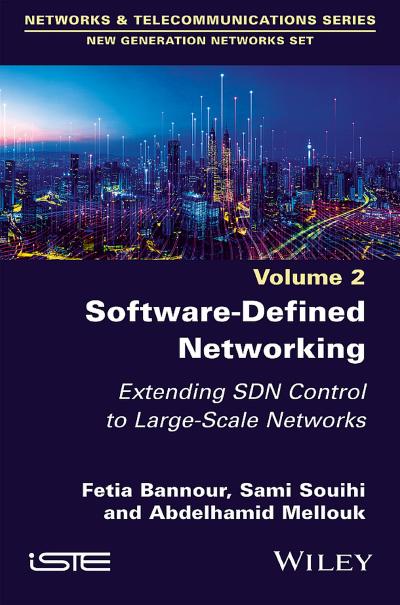English | 2023 | ISBN: 978-1786308498 | 176 Pages | PDF | 10 MB
Due to the emergence of new kinds of communication and networking technologies (e.g. the Internet of Things (IoT), mobile trends, network virtualization) and the rise of many advanced services (e.g. real-time services, e-health, multimedia, smart cities, gaming) supported by these technologies, today’s networks – considered relatively static, “ossified” and “challenging to manage”– are no longer suitable to handle the complexity and diversity of network information being disseminated in today’s modern and dynamic networking environments.
There is a strong need to shift the current network architecture to a new model that adapts to such changes and leverages new control strategies to ease network management and automation, leading to better network performance and lower operating costs. In this context, software-defined networking (SDN) has emerged as a new networking paradigm that decouples network control and forwarding functions, enabling the network control to become directly programmable and the underlying infrastructure to be abstracted for applications and services.
SDN attempts to centralize the network control, thus offering improved visibility and flexibility to manage the network, optimize its performance and reduce its operating costs. However, centralized SDN designs, in which the control plane logic is physically centralized in a single software component called the SDN controller, present numerous challenges including the issues of control plane reliability, scalability and performance. To meet these challenges, it is necessary for the SDN control architecture to evolve toward a physically decentralized system. However, such physically distributed but logically centralized SDN platforms bring additional challenges.
In this book, we aim to provide a thorough exploration of the SDN technology and, more importantly, we deal with the SDN decentralization problem in the context of large-scale networks. We propose novel approaches to decentralize the SDN control plane without forgoing the centralization benefits of SDN. Part of this book was initially based on the work conducted within the framework of Fetia Bannour’s PhD thesis. This work was subsequently developed into a book to facilitate understanding of the decentralized SDN control plane. The latter may indeed be implemented using the existing distributed SDN controllers. However, their significant number, along with their particular pros and cons, made the choice extremely difficult for those who attempted to adopt a distributed SDN architecture in large-scale deployments.
To provide useful guidelines for such SDN research and deployment initiatives, this book reviews the SDN concept by studying the SDN architecture compared to the traditional one and provides a detailed analysis of state-of-the-art distributed SDN controller platforms by assessing their advantages and drawbacks, classifying them in novel ways (physical and logical classifications) and comparing them with respect to various criteria. Additionally, a thorough discussion on the major challenges of existing distributed SDN controller platforms is provided along with insights into emerging and future trends in that area. Furthermore, to tackle some of the most prominent challenges related to the decentralization of the SDN control plane in large-scale networks, three novel approaches are proposed in this book.
The first approach addresses the SDN controller placement problem by proposing scalability and reliability aware strategies for the placement of the SDN controllers at scale, with respect to multiple reliability and performance criteria and according to different uses and contexts. These strategies use different types of multi-criteria optimization algorithms, which are compared in terms of computation time, and the quality of final controller placement configurations.
The second and third approaches investigate the knowledge sharing problem in a distributed SDN cluster by proposing adaptive and continuous consistency models. The main aim of these two approaches is to achieve a consistency adaptation strategy that provides balanced trade-offs at runtime between the application’s continuous performance and consistency requirements. These real-time trade-offs should provide minimal application inter-controller overhead while satisfying the application-defined thresholds specified in the application’s service-level agreements (SLAs). These models primarily focus on the anti-entropy reconciliation mechanisms. Then, they address the replication mechanisms by proposing an intelligent Quorum replication strategy. These approaches were validated using two SDN applications with eventual consistency needs that are developed on top of the open-source Open Network Operating System (ONOS) controllers: a source routing application and a CDN-like application.
When writing this book, we were mainly driven by our belief that SDN, together with network virtualization, will play a significant role in enabling a “full network softwarization” and reshaping the next generation of computer networks. We were also motivated by the lack of research work on decentralized SDN, which extends SDN control to large-scale networks. Our purpose is to provide useful guidelines and lessons learned for dealing with the decentralization problem in SDN for academic and industrial research purposes.
This book is a start but also leaves many questions unanswered. We hope that it will inspire the new generation of researchers. It would not have been possible without the valuable support of our students and colleagues, whom the authors would like to thank warmly.
Finally, the authors hope the readers will enjoy reading this book and learn many useful ideas and overviews for their own work and studies.
HomepageResolve the captcha to access the links!
